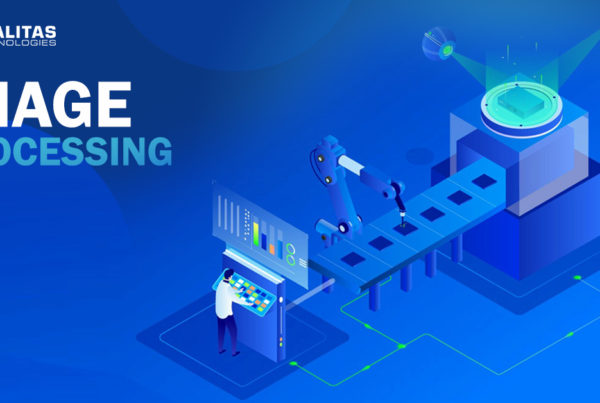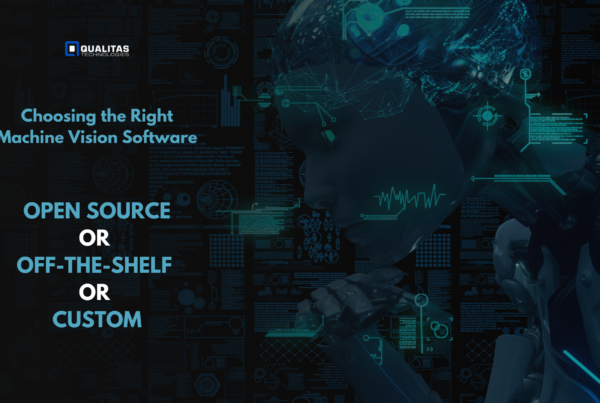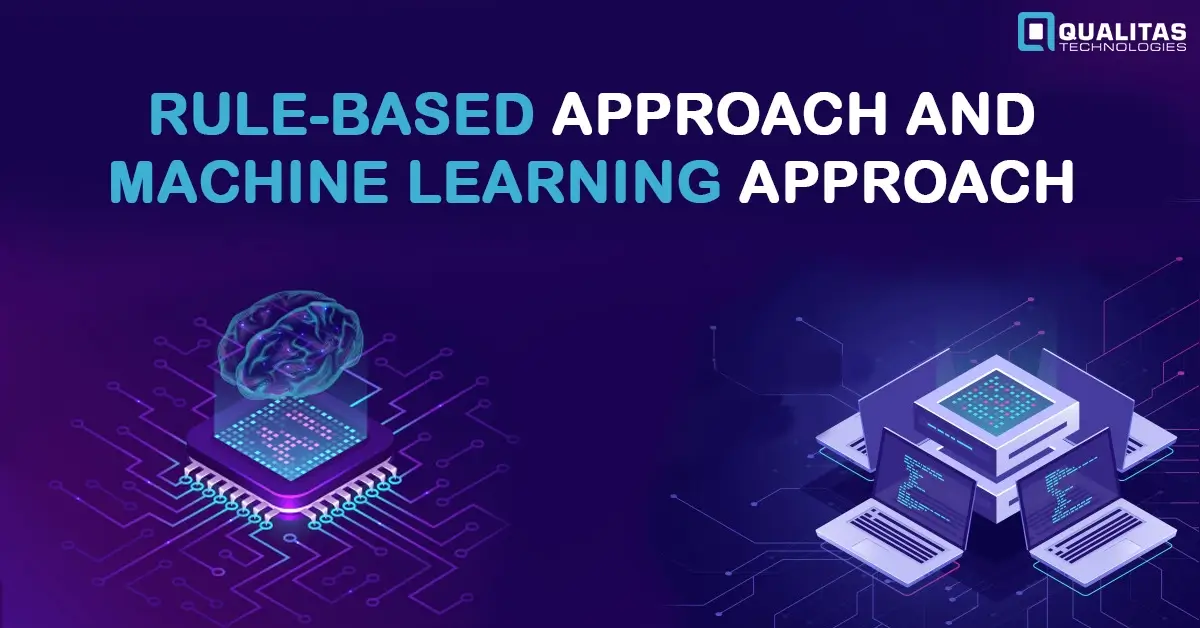
Introduction
Machine vision has become the latest buzzword these days, with its use-cases popping up in almost all kinds of industries. The massive popularity that machine vision systems have garnered is primarily because they offer cost savings while considerably enhancing accuracy and productivity. Pretty much the whole package an industry would want.
Image processing is an integral part of the machine vision workflow. In this part, software algorithms operate on images and output the desired piece of information. But what is happening under the hood? How do machines recognize pieces of information and what it is supposed to do?
Machines and computers don’t come into our world with an inherent understanding of how things are, what is acceptable and what is not. Just like a child, the machine has to be taught things from scratch. Broadly speaking, there are two approaches to help machines gain intelligence, which is the rule-based approach and the machine learning approach. Let us now delve deeper to understand what these two approaches are, how they are put to use, and which one is the right pick for you.
What Is the Rule-based Approach?
Raghava (Machine Vision Expert) says – Rule-based systems generate pre-defined outputs on the basis of a lot of rules programmed by humans. These rules are hardcoded into the system in the form of if-else statements.
Let’s consider that we have to train our vision systems to identify and group a set of tires. Using the rule-based approach, the programmer has to collaborate with the domain experts to define the parameters for grouping. Say the parameters that you put in are the number of spokes, the color of the tire, and the number of holes.
So, if a tire comes up with x number of spokes, y number of holes, and a particular color, the vision system classifies it based on limited knowledge derived from the rules that the programmer has defined. In this case, the entire intelligence and knowledge are that of the human. The computer merely has to use it to perform its task. Now, if a type of tire comes up with a few minor changes, those changes also have to be hardcoded.
Rules-based systems are a simple kind of artificial intelligence, which uses a series of simple IF-THEN statements that guide a computer to reach a conclusion or recommendation based on certain rules or logic. A rules-based system is built on two main components: a set of facts about a situation, and a set of rules for how to deal with those facts:
A set of facts. Also known as the knowledge base. These facts are a combination of data, such as income and a condition such as ‘is zero’, or ‘is greater than £10k’.
A set of rules. Also known as the rules engine. It is the rules that describe the relationship between the IF and the THEN statements.
With these two basic concepts, it is possible to build a basic AI system such as a tool to recommend clothing choices on a particular day. Let us look at an example better suited for the manufacturing industry.
Also, Read– 7 Types Of Machine Learning Algorithms
Consider a machine vision system that needs to identify a rubber wheel variant. The first most logical rule to specify is the color of the rim. We can clearly see the difference in the colors of the rims in the following image and can instruct the algorithm to classify based on the same.

One of the key benefits of a rules system is that writing and implementing rules is quite easy. If we know about the situation of interest, we can easily create rules based on simple IF-THEN statements to represent relationships and classifications. However, we need to account for special cases. What if there are two different types of wheels with the same colored rims? Then we need to define a rule to count and classify based on the number of holes.
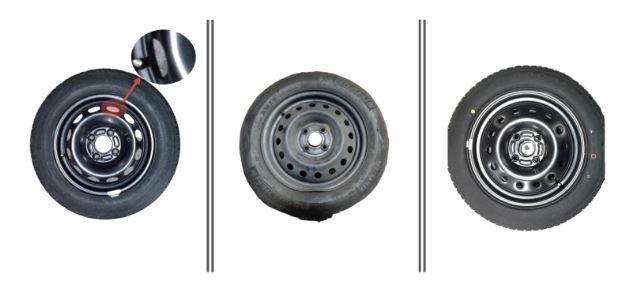
But what if we come across a type of wheel that does not have holes? This list could go on. Rules-based systems are deterministic in nature. Not having the right rule in place can result in false positives and false negatives.
Therefore, a system of rules can start quite simple but can become rather unwieldy over time as more and more exceptions and rule changes are added. While individual rules might be easy to understand and represent, the complex interactions of a full rules engine may be more difficult to grasp.

What Is Machine Learning?
The machine learning approach relies on complex logic and mathematics. The ML system requires a lot of training data. In fact, the more the training data, the more accurate is the ML model. The training data is a set of examples and the results. Based on this data, the computer develops the ML model and figures out the patterns and rules to predict the future samples.
Now, when you input new data, the ML model makes the prediction. If the prediction is right, then great, and if not, the computer itself alters the algorithms and improves the model. Tersely, in the ML approach, the rules are not hardcoded but are actually figured out by the computer itself.
Machine learning is an alternative approach that can be used in machine vision that can help to address some of the shortcomings with rules-based methods. Rather than attempting to fully emulate the decision-making process like a human, machine learning methods typically only take the outcomes and tweak themselves to reach those outcomes. Machine learning is probabilistic in nature and uses statistical models rather than deterministic rules. The basic operation of a machine learning process is to say that based on the historic outcomes we can predict future outcomes.
Machine learning approaches assume that outputs for any problem can be described by a combination of input variables and other parameters. The machine learning algorithm itself is often regarded as a ‘black box‘ – the inputs and outputs are closely connected to the real world, but the internal works are more difficult to describe.
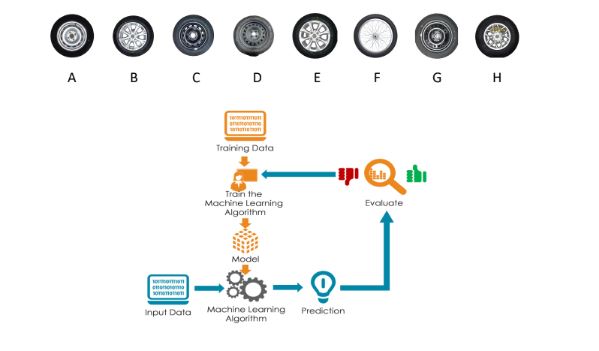
In the machine learning approach for our aforementioned example, we first need to train our models on examples of each variant. Through these examples, and by predicting what each of them could be, the system learns to differentiate between them. The system works similarly to how a human would differentiate objects based on patterns.
Difference Between Rule-based Approach and Machine Learning Approach
The key differences between the ML approach and the rule-based approach have been enumerated below:
- Data and Programming
The ML approach is data-hungry, i.e., a lot of labeled data has to be fed into computers as the training data to develop an ML model with high accuracy. On the other hand, in the rule-based approach, you have to hardcode every single detail but the data required is quite light.
- Hardware
Since ML involves complex mathematical operations, the ML approach requires specialized hardware such as GPUs for optimized training. In fact, the absence of viable specialized hardware was a core reason why ML wasn’t explored earlier. In rule-based systems, training and prediction can be carried out on the same machine without any specialized hardware.
- Debugging
While the rule-based approach requires tedious programming, it is easier to debug. Since you wrote the code, it might be convenient for you to determine which module or which feature is resulting in errors. ML models, on the other side, require straightforward training but are difficult to debug because it was the computer that came up with the rules and patterns. Since the correlation between the input and output is unclear, learning systems are also referred to as “black boxes”.
- Adaptivity
ML models can constantly adapt and evolve with the continuous streams of data and, therefore, enhance their accuracy over time. However, the intelligence of rule-based systems is limited.
Also, Read– Deep Learning Neural Network- Explained: Vision Inspection 2021
Source – techtarget.com For rules-based systems, a list of rules is created, often by an in-house developer, then an inference engine or semantic reasoner performs a match-resolve-act cycle, measuring information that it takes in against these rules.
Which One Should You Choose?
Both the machine learning approach and the rule-based approach have their own set of advantages and disadvantages. The better choice for you entirely depends on the situation and application.
Choosing a rule-based approach is a better choice when:
- The number of outcomes is small or fixed.
- The risks associated with errors are too high.
- Implementing the ML approach is not feasible.
However, you should go for the ML approach if:
- Defining simple rules do not suffice.
- Situations and data are changing faster than the ability to write new code.
- You want to incorporate a scalable approach.
CONCLUSION
In this blog post, we delved into the two different kinds of software approaches: rule-based approach and machine learning approach. We also covered their pros, cons, and differences and how you can choose the right pick for you.
Get In Touch With Us


